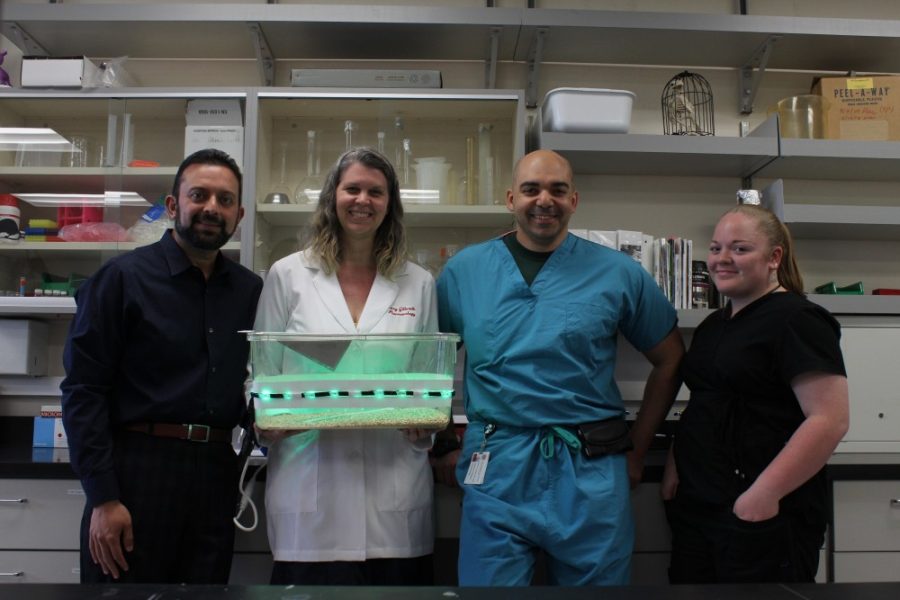When pain rears its ugly head, people often reach for a bottle of pills in hopes of relief. Those who suffer from chronic, debilitating pain may find it difficult to function on a day-to-day basis without pain pills, which can prove costly and addictive over time. However, a team of UA researchers recently discovered a medical phenomenon: green light therapy can reduce discomfort and over-reliance on medication.
Dr. Mohab Ibrahim, a UA assistant professor of anesthesiology and pharmacology and the director of the Comprehensive Pain Management Clinic, decided to experiment with green LED lights using rats after realizing that sitting among trees helped to mitigate his own headaches.
“One of the things we [physicians] face every day is that we don’t have enough tools to manage pain,” Ibrahim said. “I thought what if we can find a non-pharmacological way to help pain or help reduce pain?”
At first, the experiment took place on campus within the UA College of Medicine. It focused on two groups of rats—one group was bathed in the low-intensity green LED light, and one group was fitted with contact lenses to block the light.
“We tested several colors, including white and dark, and what we’ve seen is that other types of light produce the same effect, but it wasn’t as potent as the effect of the green light,” Ibrahim said.
RELATED: America’s opioid epidemic: A painful problem
Although the exact mechanism that makes green light so helpful is unknown, the researchers noted green light appears to increase levels of natural opioids in the body.
Green light produced the strongest effects, which were compounded over time. The rats that were exposed to the light showed increased tolerance for stimuli despite their pain. Because the rats who were exposed to green light exhibited less pain behavior, Ibrahim and study senior author Rajesh Khanna, an associate professor of anesthesiology, neuroscience and pharmacology, decided to move the experiment into small-scale human trials.
The subjects of the human study were asked to use the green LED light in a darkened space in their home for between one and two hours. Alongside coloration, the researchers discovered that using low-intensity light was important to limit eye damage.
“We use a very low-level intensity light, very low level, and for the intended effects you need to tweak it for just that low level,” Khanna said.
Millions of people around the world suffer from chronic pain, which is defined as ongoing pain in one or more parts of the body lasting longer than six months. Because of the non-invasive nature of the procedure, patients could potentially undergo the green LED light therapy at little to no cost.
“Ideally, the green light has some sort of synergistic effect, where you combine it with X medication and now you need very, very little of X to get the same relief,” Khanna said.
RELATED: UA professor honored for achievement in pain management
All of the trial participants claimed that their pain was lessened and their moods improved. One novel thing about the LED therapy is that there were no reported side effects from the first several patients. This does not mean that there would never be any, but the results look promising. Although the pre-trials were considered a success, it should be stressed that this work is still in its preliminary stages and there are more questions than answers.

“We still really have not looked into all the parameters yet,” Ibrahim said. “We just wanted to see, does it work in the first place.”
Ibrahim and Khanna are still investigating whether or not the LED treatment would need to be administered every night or perhaps every other day, or even for small periods of time. This is one of the things they will be looking to figure out in the larger clinical trials.
Ibrahim and Khanna have applied for several grants in order to continue their research and perhaps stage a larger clinical trial with many more participants. In order to make any solid conclusions there needs to be more data gathered from more individuals.
“Something important to emphasize is that we don’t know if it’s going to work for everyone, but right now I have a small number of people for whom it worked,” Ibrahim said.
Follow Rebekah Ulmer on Twitter.










